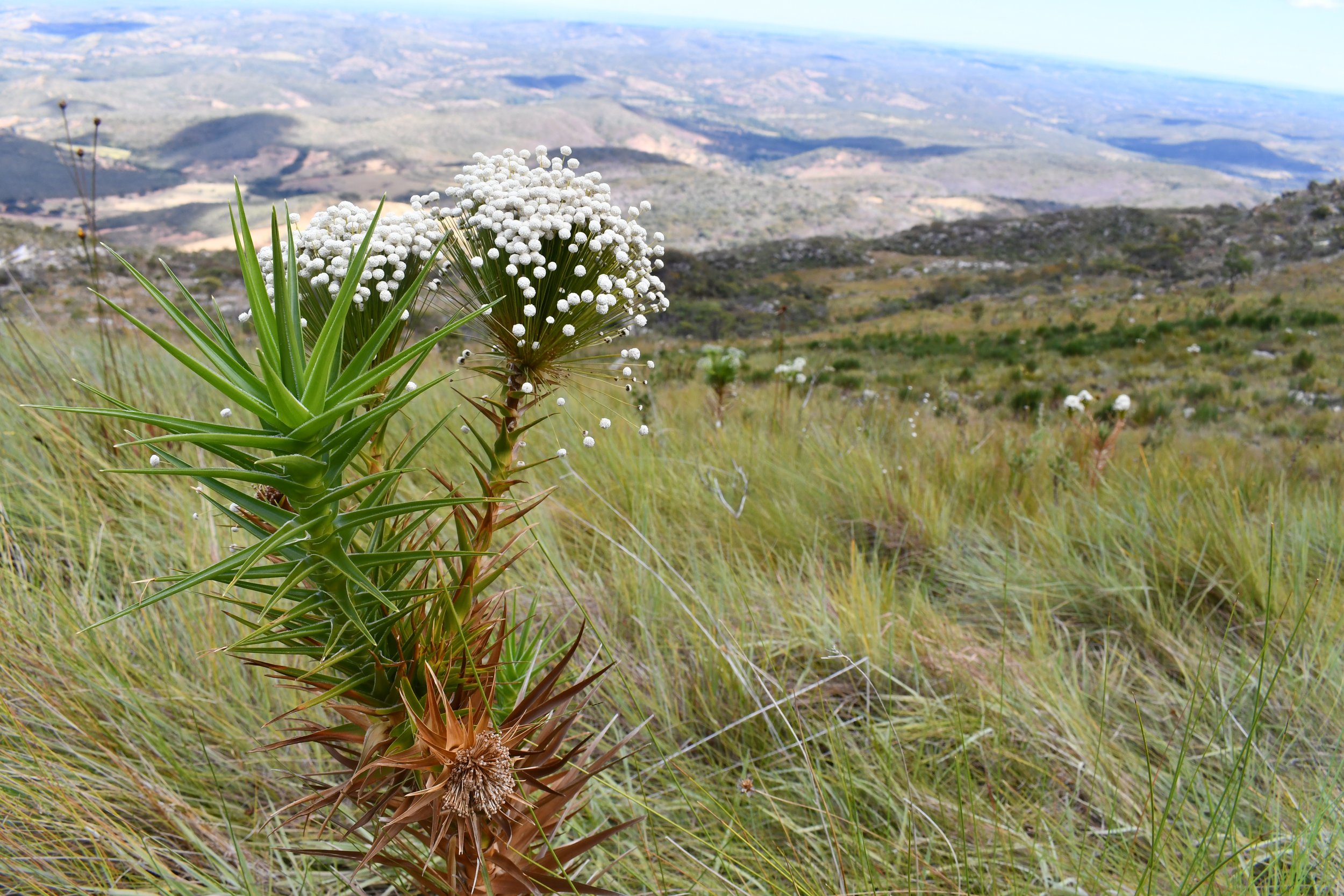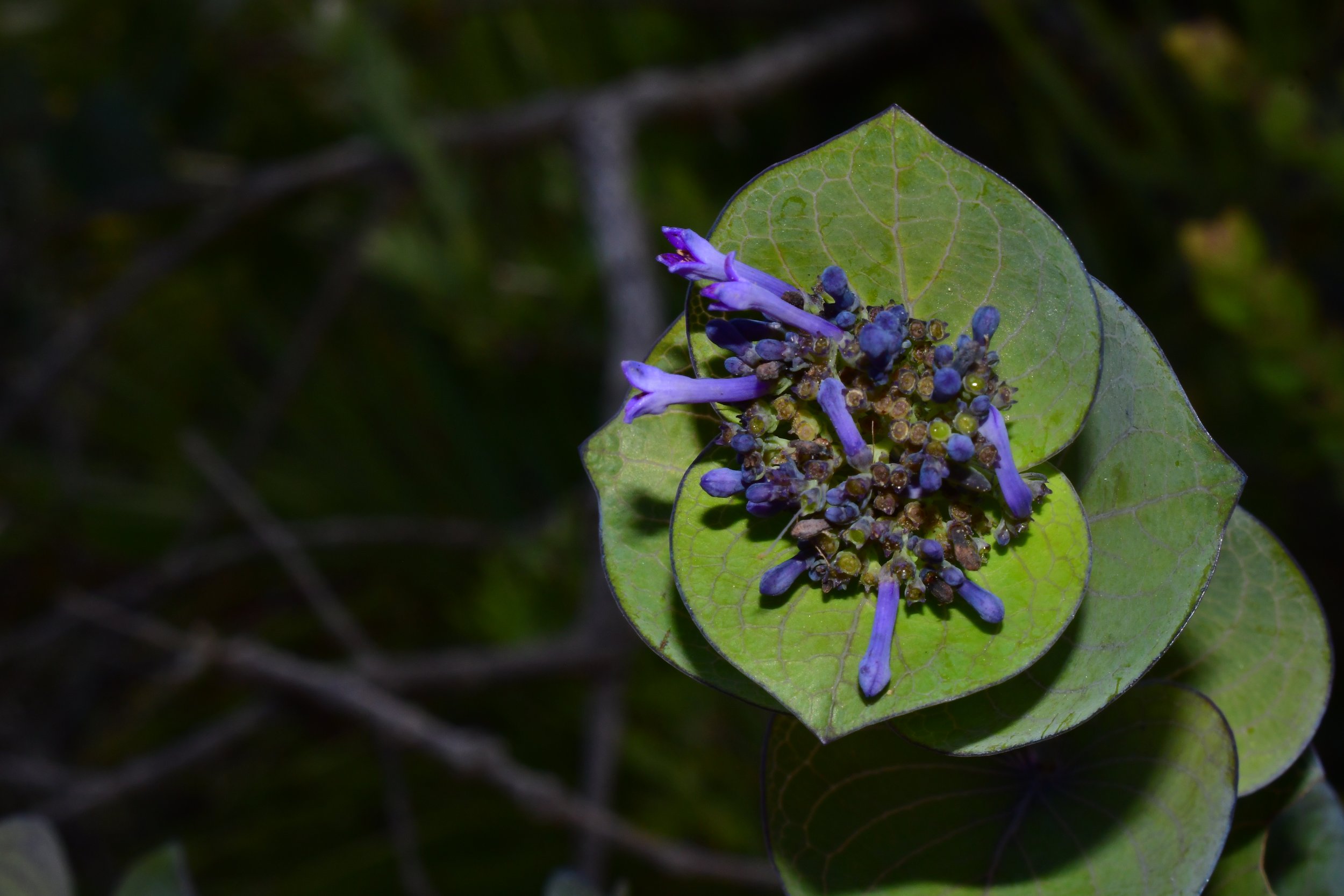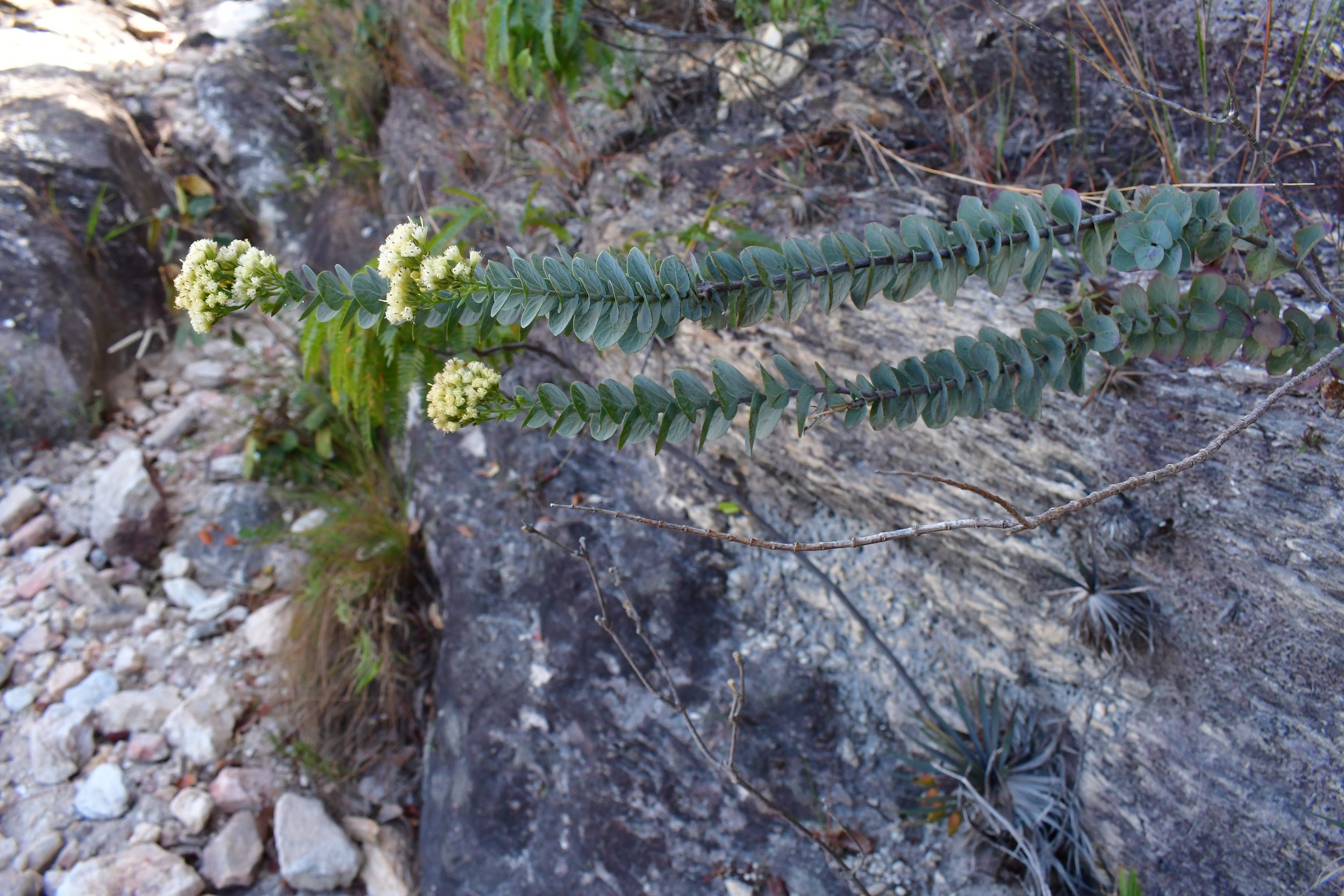Campos Rupestres are generally higher, drier sites within Minas Gerais characterized by thin soils and outcroppings of quartzitic sandstone. The low latitude has placed it within the Intertropical Convergence Zone (a latitude defined by alternating wet and dry seasons which correspond to how the angle of the Earth alternates with its temporal position pointing towards or away from the sun at various points within its orbit) which means that the region experiences a long dry “winter” and wet summer, much like areas of Mexico.
Plants - having to deal with this seasonal dry period during which it can still be quite hot due to the low latitude - have evolved various drought coping strategies such as CAM photosynthesis, succulence, excess leaf pubescence and trichomes (hairs), waxy cuticles, production of excess anthocyanin (or betalain in Caryophyllales) pigments, xylopodia, and more.
Lychnophora sp.
Richterago sp.
Chamaecrista vauthieri
Cyrtopodium parviflorum
The substrate of quartzite / cooked sandstone
Esterhazya nanuzae (Orobanchaceae)
Exterhazya nanuzae (Orobanchaceae)
Vellozia
Cyrtopodum parviflorum (Orchidaceae)
Cyrtopodum parviflorum (Orchidaceae)
Chamaecrista vauthieri (Fabaceae)
Chamaecrista vauthieri
Chamaecrista vauthieri
Diplusodon (Lythraceae)
Lippia sp. (Verbenaceae)
Lippia sp. (Verbenaceae)
Diplusodon































































